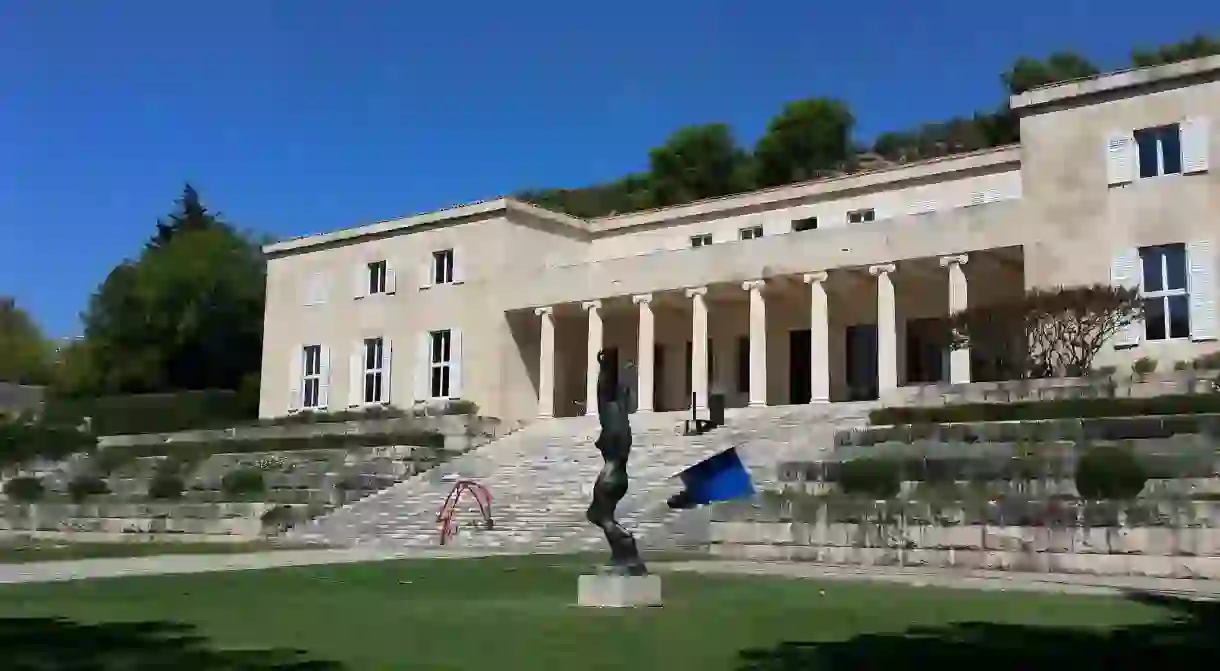The Best Museums and Galleries To Visit in Split

In and around the city’s historic centre, Split boasts a modest scattering of museums that make a pleasing diversion for visitors escaping the summer heat. This is history presented in old-school fashion – the absorbing artworks and intriguing artefacts speak for themselves. The many impressive works of sculptor Ivan Mestrović – housed in two separate complexes overlooking the sea – are worth the visit to Split alone. Here is Culture Trip’s pick of the best museums and galleries to visit in stunning Split.
Arrive in style with this eight-day coastal cruise from Dubrovnik to Split, and visit local vineyards, historic Mostar and the waterfalls of Krka National Park.
Archaeological Museum
Museum

Established way back in 1820, the Archaeological Museum is well worth the 10-minute trek from town up Zrinsko-Frankopanska. Prime exhibits include a late-Neolithic ceramic bowl found on Hvar, a near-intact warrior’s helmet from 400BCE and plentiful finds from the Roman settlement at nearby Salona. The best local discoveries include tombstone mosaics, a sarcophagus decorated with a whole range of animals and a bust of the Emperor Trajan, along with three early Christian sarcophagi.
Ethnographic Museum
Cathedral, Museum, School
In the shadow of the tall Cathedral tower, the Ethnographic Museum owes its existence to turn-of-the-century school director Kamilo Toncić and the handicrafts he collected across Dalmatia to show his pupils. Furniture and kitchen implements also feature. Part of the museum extends into what were Diocletian’s imperial bedchambers – a peek is worth the modest price of admission alone. A Roman staircase then leads to the roof of the vestibule to provide a fine view of Split’s historic centre and the sea and islands beyond.
Gallery of Fine Arts
Museum, Art Gallery
Across two floors of an attractive, bright interior, Split’s Gallery of Fine Arts covers six centuries of art from around the region. At any one time, some 400 works are on display from a permanent collection of more than 5,000. Venetian Masters dominate on the upper floor, along with a stand-out engraving by Dürer. Downstairs, the most notable pieces are by painter Vlaho Bukovac, created in Split in the 1880s, a bronze statue of Leo Tolstoy by Ivan Mestrović and an Egon Schiele watercolour. Note also the striking abstract expressionism by Edo Murtić, who had his own exhibition here in 1966.
Kastelet
Museum, Art Gallery, Historical Landmark
Referred to in English as simply Kastelet or Little Castle, this is a worthwhile addition to any visit to the main Mestrović Gallery nearby. One ticket covers both attractions. Purchased by the sculptor Ivan Mestrović in 1939 as a ruined 16th-century residence, Kastelet houses his great work The Life of Christ. The series of 28 reliefs in wood is guarded over by a sculpture of the Crucifixion. Exiled to America, Mestrović was able to return and carry on his work here 20 years later, but it proved to be his last visit to Croatia.
Mestrović Gallery
Museum, Art Gallery
The hundreds of sculptures, plans and drawings spread over the two floors of the Mestrović Gallery represent an act of huge generosity on the part of Croatia’s greatest sculptor. Having designed and built this sea-facing family villa himself in the 1930s, Ivan Mestrović was forced to flee the Italian occupation. Imprisoned in Zagreb, he escaped to America, where he later bequeathed his four properties and life’s works to the Croatian nation. The result is this wonderful collection with pieces in marble, bronze, wood and plaster, ranged as Mestrović may have appreciated in what was his own home.
Split City Museum
Museum

Illustrating urban history over 2,000 years, the somewhat old-school collection of the Split City Museum runs from an artist’s impression of Diocletian’s Palace to coins bearing the head of the emperor himself and a map showing where the city was bombed during World War II. A separate wing is dedicated to Split artist Emanuel Vidović, a contemporary of Ivan Mestrović, whose works include paintings of Split harbour and cathedral. The Roman remains collected by the noble Papalić family, who owned this Gothic-Renaissance palace, were later taken to the city’s Archaeological Museum.













